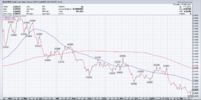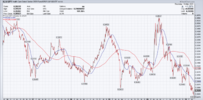MovingAverage
Just a retail hack
- Joined
- 23 January 2010
- Posts
- 1,315
- Reactions
- 2,565
for newbies like me: whar is signal? in MACD case:
The signal line is a 9-day EMA of the MACD line. As a moving average of the indicator, it trails the MACD ....
Basically a smoother view of the indicator to remove noise.Dummies like me need full explanation
 Although in my case the signal I use with my TSI is not a 9-day EMA of the TSI.
Although in my case the signal I use with my TSI is not a 9-day EMA of the TSI.









